
There are so many amazing things to do in China in the winter that it’s hard to choose. There are activities for everyone who likes to explore new cultures and go on exciting adventures. From the snow-covered mountains in Northern China to the hidden gems in the South, this time of year turns the whole country into a child’s play area.
Join us on a journey through the diverse landscapes and immersive activities that make China a winter wonderland for all.
Overview of Winter Activities in China
Winter in China unfolds a variety of activities as temperatures drop and snow covers the landscape. Imagine it as a storybook with different chapters, each offering a unique experience tailored to various preferences. It’s not just about the cold weather; it’s like a beautiful symphony, each note catering to different tastes and desires.
Whether you seek adventure, cultural exploration, or simply want to embrace the winter wonderland, China has something special for every traveler. Let’s dive into the chapters of this frosty tale and discover the myriad experiences that make winter in China truly magical.
Skiing Adventures
When winter arrives, China changes into a wonderland for skiing fans, providing not just a sport but also an exciting adventure. Let’s look at the best ski resorts in Northern China, surprising skiing options in lesser-known locations, the importance of slope safety, and key recommendations for getting the most out of your skiing vacation in China.

Top Ski Resorts in Northern China
- Yabuli International Ski Resort: Nestled in the mountains of Heilongjiang, Yabuli stands tall as the largest and best-equipped ski resort in China. Boasting Olympic-standard facilities, it caters to both beginners and seasoned skiers. The panoramic views of snow-covered peaks add a touch of awe to your skiing experience.
- Jilin Beidahu Ski Resort: Surrounded by the breathtaking scenery of Jilin Province, Beidahu Ski Resort offers a diverse range of slopes, from gentle hills for novices to challenging descents for thrill-seekers. The crisp mountain air and well-groomed trails make it a haven for skiing enthusiasts.
- Secret Garden Ski Resort: Tucked away in the mountains of Zhangjiakou, Secret Garden Ski Resort not only provides excellent skiing conditions but also serves as a host for international competitions. The resort’s high-altitude location ensures a prolonged ski season, making it a must-visit for winter sports aficionados.
Skiing Opportunities in Unexpected Places
- Nanshan Ski Village, Beijing: Surprising many, Beijing is not just about historical landmarks; it’s also home to Nanshan Ski Village. Just a short drive from the bustling city, this ski oasis offers a delightful escape with its well-designed slopes, snow parks, and vibrant atmosphere.
- Jingyuetan National Forest Ski Resort, Changchun: Changchun, known for its film history, unfolds another dimension in winter. The Jingyuetan National Forest Ski Resort is a hidden gem, providing an unexpected skiing haven surrounded by pristine forests. It’s an ideal spot for those seeking tranquility and adventure.
Safety First
Before you embark on your skiing adventure, prioritize safety:
- Gear Up: Ensure you have the right equipment – from skis and poles to helmets and goggles. Proper gear not only enhances your performance but also ensures your safety on the slopes.
- Listen to Instructors: If you’re new to skiing, pay close attention to the instructors. Their guidance not only improves your skills but also enhances your overall experience.
- Be Weather-Wise: Keep an eye on weather conditions. Sudden changes can impact visibility and snow conditions, influencing your safety on the slopes.
Tips for Skiing Tours in China
- Explore Beyond the Resorts: While the top resorts offer fantastic experiences, don’t shy away from exploring local skiing spots. You might stumble upon hidden gems that offer a more intimate connection with China’s winter landscape.
- Embrace Local Culture: Take a moment to embrace the local culture. Enjoy regional cuisines, interact with locals, and make your skiing tour not just about the sport but a holistic experience.
- Plan Ahead: Before embarking on your skiing tour, plan ahead. Check resort conditions, weather forecasts, and local regulations to ensure a smooth and enjoyable adventure.
Related reading: Winter Vacations in China: Best Places to Visit – Things to Do – Travel Tips – Opens in new tab
Ice Festival Show
The Harbin Ice Festival takes advantage of the cold winter weather to put on a stunning show that turns the city into a Winter Wonderland that takes travelers’ hearts.
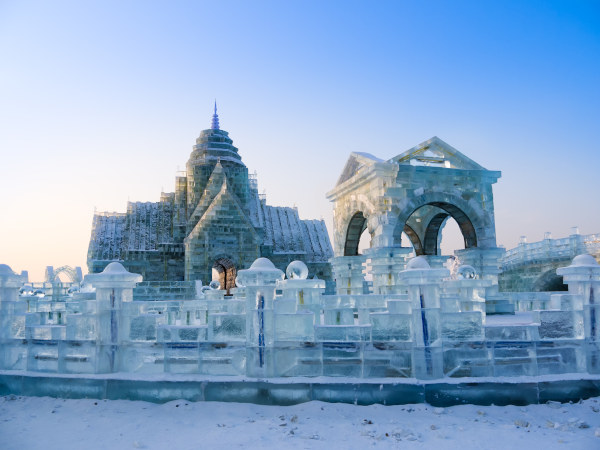
Harbin Ice Festival (哈尔滨冰雪节): A Winter Wonderland
Harbin, situated in the northernmost part of China, transforms into a magical realm during its annual Ice Festival. As the temperature drops, experienced artisans patiently carve massive masterpieces from ice blocks taken from the frozen Songhua River. The entire city transforms into an ethereal wonderland filled with beautiful ice sculptures, throwing a captivating atmosphere over the environment.
Marvels of Art and Architecture
The Harbin Ice Festival is more than just an exhibition; it demonstrates the combination of creative genius and architectural capability. Skilled sculptors from all around the world gather, shaping massive ice pieces into complex sculptures that go beyond conventional vision. Here, ice is more than simply frozen water; it serves as a canvas for ephemeral art, including life-sized castles, mythological animals, and abstract wonders that test the limits of imagination.
The architectural wonders are more than just their physical shapes; they also make use of ice’s special qualities. Translucent walls collect and refract light, resulting in a fantastic interplay of colors and patterns. It’s a visual feast that goes beyond the ordinary, beckoning visitors to immerse themselves in a world of frozen fantasies.
Nighttime Wonders of the Festival
As the sun sets, the Harbin Ice Festival transforms into a canvas of nocturnal wonders. The sculptures, embedded with colorful LED lights, come to life in a symphony of hues, casting a kaleidoscope of colors across the snow-covered landscape. Strolling through the festival grounds under the night sky becomes a journey through a frozen dreamscape, where every step reveals new facets of this winter wonder.
The festival hosts enchanting performances, including ice lantern shows and ice-themed acrobatics, adding a dynamic and theatrical dimension to the experience. The crisp air carries echoes of laughter and amazement as visitors immerse themselves in the luminous charm of the night.
Tips for Visiting the Ice Festival
- Dress in Layers: The cold in Harbin can be biting, so layer up with insulated clothing to stay warm during your exploration of the ice sculptures.
- Comfortable Footwear: The festival grounds can be slippery. Opt for footwear with good traction to navigate the icy terrain safely.
- Visit at Dusk: To witness the magical transition from day to night, plan your visit during the dusk hours when the sculptures transform into radiant beacons against the dimming sky.
- Capture the Moment: Bring a good camera to capture the mesmerizing beauty of the ice sculptures, especially when they come alive with the nighttime lights.
- Savor Local Delicacies: Don’t miss the chance to indulge in Harbin’s local winter delicacies, from hearty stews to warm beverages, to complete your immersive winter experience.
🧧 Use our free “ChinaGoGuide” app. Your personal guide to your journey to China. Try it now!
Hot Springs Retreat
As winter gets colder, looking for comfort in the warm embrace of hot springs becomes a welcome break. China, with its numerous landscapes, has a plethora of exceptional hot spring resorts where old traditions meet modern luxury.
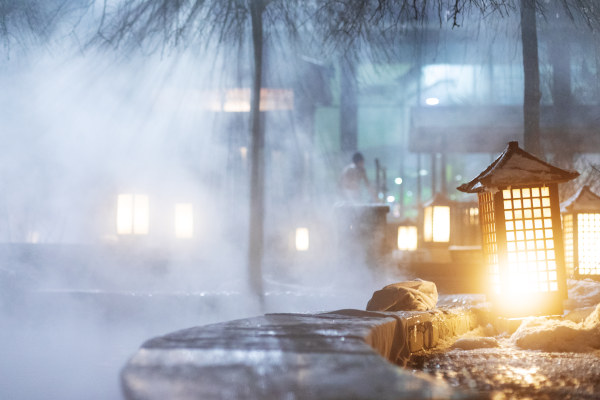
Top Hot Spring Resorts in China
- Changbaishan International Resort: Nestled near the legendary Changbai Mountain, this resort harmonizes the therapeutic benefits of hot springs with panoramic views. The mineral-rich waters, embraced by the snow-capped peaks, create an otherworldly ambiance, making it a haven for relaxation.
- Dunhuang Mogao Hot Spring Resort: In the midst of the Gobi Desert (戈壁), this oasis of relaxation merges traditional Chinese architecture with state-of-the-art spa facilities. Immerse yourself in the rejuvenating waters as you witness the stark contrast between the desert landscape and the warmth of the hot springs.
- Hot springs in Jilin City: Nestled in the picturesque landscapes of Jilin City, China, the hot springs offer a serene escape into nature’s therapeutic embrace. Renowned for their soothing properties, these geothermally heated pools provide a rejuvenating experience, combining the allure of relaxation with the region’s stunning beauty. Visitors can immerse themselves in the warm, mineral-rich waters, believed to have health benefits, while surrounded by the tranquility of the surrounding mountains and lush greenery.
- Yangshuo (阳朔) Ancient Garden Hot Springs: Tucked away in the picturesque landscapes of Yangshuo, this resort marries natural beauty with wellness. The hot springs here are infused with local herbs, creating a unique sensory experience that transports you to a realm of tranquility amid karst mountains.
Traditional Practices at Hot Springs
Beyond the warmth of the waters, hot springs in China are steeped in rich traditions that add layers of cultural significance to the experience.
- Attire Etiquette: Respect local customs by donning appropriate hot spring attire. In many places, swimsuits are discouraged, and instead, guests often wear modest, lightweight clothing.
- Cleansing Rituals: Prior to entering the hot springs, it’s customary to cleanse oneself thoroughly. This ritual signifies not just physical purification but also a symbolic cleansing of the mind.
- Tea Ceremonies: Many hot spring resorts incorporate tea ceremonies as part of the experience. Sipping on a warm cup of aromatic tea enhances relaxation and complements the soothing effects of the hot springs.
Tips for Visiting a Hot Springs Retreat in China
- Research Resort Etiquette: Before your visit, familiarize yourself with the specific rules and etiquettes of the hot spring resort you plan to explore. This ensures a seamless and respectful experience for both you and other visitors.
- Timing Matters: Optimal hot spring enjoyment often involves strategic timing. Consider visiting during quieter hours to bask in the serenity without the hustle and bustle of peak times.
- Hydration is Key: While the hot springs offer warmth, it’s essential to stay hydrated. Bring a water bottle and sip on fluids regularly to balance the effects of the heat.
- Bring Your Own Towel and Robe: While many resorts provide towels, bringing your own ensures comfort and convenience. A cozy robe can also enhance your overall experience.
- Mind Your Health: If you have health concerns or medical conditions, consult with a healthcare professional before indulging in hot springs. It’s essential to prioritize your well-being during the experience.
Related reading: The Ultimate Packing List for Your Winter Vacation in China – Opens in new tab
Winter Hiking Adventures
Exploring China’s winter landscape reveals a tapestry of winter trekking excursions, where crisp air and breathtaking views combine to provide an immersive experience for every tourist.
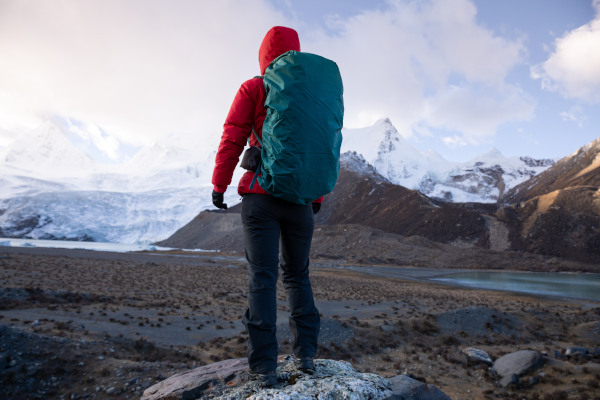
Top Locations for Winter Hiking
- Mount Hua (华山): Known for its sheer granite peaks and challenging trails, Mount Hua transforms into a winter wonderland. The snow-dusted scenery adds a serene charm to the rugged landscape, providing a challenging yet visually rewarding winter hiking destination.
- Jiuzhaigou Valley (九寨沟): Renowned for its ethereal landscapes, Jiuzhaigou Valley in winter is a mesmerizing blend of frozen waterfalls and pristine lakes. Hiking through this UNESCO World Heritage site during winter unveils a different facet of its natural beauty.
- Zhangjiajie National Forest Park (张家界国家森林公园): Famous for its towering sandstone pillars, Zhangjiajie National Forest Park becomes a mystical winter realm. The snow-covered pillars and ancient trees create a surreal atmosphere, making it an enchanting destination for winter hikers.
- Yellow Mountain (黄山): With its iconic granite peaks, twisted pine trees, and hot springs, Yellow Mountain becomes a serene winter retreat. The snow-laden landscape transforms this UNESCO World Heritage site into a visual spectacle, offering a unique winter hiking experience.
Safety First
- Layer Up: Dressing in layers is crucial for winter hiking. Ensure you have thermal wear, a windproof outer layer, and waterproof boots to stay warm and dry during your adventure.
- Check Weather Conditions: Before embarking on a winter hike, check weather forecasts and trail conditions. Sudden changes in weather can impact visibility and trail safety.
- Equip Yourself: Carry essential gear, including a map, compass, flashlight, and a first aid kit. Having the right equipment ensures you are prepared for unexpected challenges.
- Inform Others: Always inform someone about your hiking plans, including your route and expected return time. This ensures that someone knows your whereabouts in case of any unforeseen circumstances.
Tips for Winter Hiking in China
- Timing Matters: Plan your winter hike during daylight hours to make the most of the available light. Winter days are shorter, so starting early ensures you have ample time to complete your hike.
- Hydration is Key: Despite the cold weather, staying hydrated is essential. Drink water regularly to prevent dehydration, especially in the dry winter air.
- Mind the Ice: Be cautious of icy patches, especially on elevated trails. Carry traction devices like crampons to enhance your grip on slippery surfaces.
- Capture the Beauty: Winter landscapes offer unique photo opportunities. Bring a camera to capture the snow-covered scenery and the serene beauty of winter hiking.
- Embrace Nature’s Silence: Winter hikes often come with a serene quietness. Take moments to embrace the stillness of nature, interrupted only by the crunch of snow beneath your boots.
Related reading: “Cash carrying Rules to Enter/Exit in China“
Traditional Festivals in Winter
Exploring China’s winter season reveals a rich tapestry of traditional festivals, where centuries-old practices and lively festivities combine to warm the cold environment and provide cultural resonance.

Which are the Top Traditional Winter Festivals in China?
- Chinese New Year Celebrations: The pinnacle of winter festivals, Chinese New Year, or Spring Festival, marks the lunar New Year. Festivities include grand parades, dragon dances, and the iconic lion dance, bringing communities together in a burst of color and joy.
- Lantern Festival Delights: Following Chinese New Year, the Lantern Festival illuminates the winter nights. Glowing lanterns adorn streets and public spaces, symbolizing the pursuit of brightness and the casting away of darkness. Traditional performances and riddle-solving activities add a playful touch.
- Winter Solstice Customs: Winter Solstice, known as Dongzhi, is a time for family reunions. Tangyuan, sweet rice dumplings, are consumed to symbolize family unity. It’s a festival deeply rooted in Chinese philosophy, emphasizing the importance of balance in the natural world.
Culture & Customs
Winter festivals in China are not merely spectacles; they are windows into the cultural tapestry of the nation.
- Family Reunion: Central to these celebrations is the concept of family reunion. People travel far and wide to be with their loved ones during these festivals, fostering a sense of togetherness and continuity.
- Symbolism in Festivities: Symbolism is woven intricately into the fabric of winter festivals. From the red decorations symbolizing good luck and prosperity to the round shape of tangyuan representing completeness and unity, every element tells a story.
- Ancient Rituals: Many winter festivals carry echoes of ancient rituals, connecting contemporary celebrations to the profound history of China. Understanding the roots of these customs adds depth to the festive experience.
Tips for Visiting Traditional Winter Festivals in China
- Immerse in Local Attire: Consider donning traditional Chinese attire during the festivals. Not only does this enhance the cultural experience, but it also makes you feel like an active participant in the celebrations.
- Learn Basic Greetings: A few basic greetings in Mandarin can go a long way. Locals appreciate visitors who make an effort to engage in the local language, even if it’s just a simple “Happy New Year.”
- Respect Customs and Taboos: Familiarize yourself with local customs and taboos. For instance, certain colors may be considered unlucky, and certain actions may be deemed disrespectful. Respecting these nuances enriches your cultural immersion.
- Try Local Delicacies: Winter festivals come with a delightful array of seasonal treats. Be adventurous and try traditional foods associated with each festival, savoring the flavors that define the winter culinary landscape.
- Capture the Moments: Bring a camera to capture the vibrancy of the festivals. The ornate decorations, the fervor of the parades, and the warmth of communal celebrations create visual stories worth preserving.
Related reading: 12 Spring Activities in China for Every Traveler!– Opens in new tab
Ice Fishing Excursions
Ice fishing tours in China bring visitors to a world of frozen lakes, centuries-old techniques, and the excitement of uncovering hidden treasures under the icy surface. This winter activity, which goes well with nature’s icy symphony, is a peaceful getaway for people who want to find excitement off the beaten path.
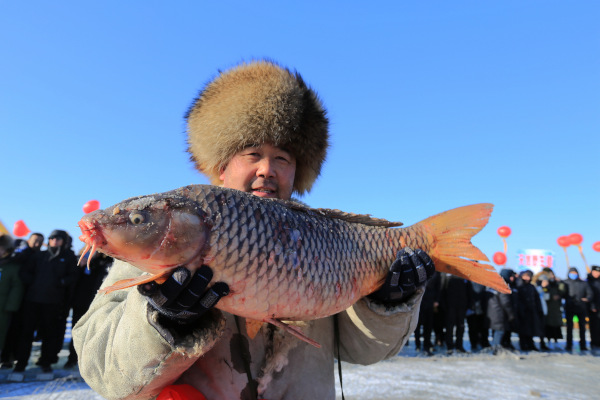
Frozen Lakes and Ponds for Ice Fishing
- Lake Harbin (哈尔滨): Nestled in the frigid embrace of Harbin’s winter, Lake Harbin becomes a haven for ice fishing enthusiasts. Beneath its frozen surface lie thriving populations of fish, providing an immersive experience amidst the snow-covered landscapes.
- Yellowstone River (黄石河): In the northwestern reaches of China, the Yellowstone River’s frozen stretches transform into a picturesque setting for ice fishing. Here, the solitude of the winter landscape amplifies the joy of catching prized fish in a pristine environment.
- Lake Qinghai (青海湖): The azure expanse of Lake Qinghai, the largest saltwater lake in China, freezes during winter, offering a unique platform for ice fishing. As the icy wind whispers across the frozen surface, anglers engage in the age-old pursuit of reeling in their catch.
Traditional Ice Fishing Techniques
Ice fishing in China isn’t just a recreational activity; it’s a dance between tradition and nature, employing techniques passed down through generations.
- Heated Ice Fishing Shelters: Anglers often utilize heated ice fishing shelters to shield themselves from the biting cold. These cozy havens provide not just a refuge but also a communal space for sharing tales of the day’s adventures.
- Hand Augers and Ice Saws: Traditional tools like hand augers and ice saws punctuate the ice’s surface, creating openings for fishing lines. The rhythmic sound of these tools cutting through the frozen layers echoes the age-old practice of preparing the ice for the pursuit beneath.
- Tip-Ups and Jigging: Ingenious contraptions known as tip-ups signal when a fish takes the bait, while skilled anglers use jigging techniques to entice and allure their underwater prey. Each movement is a well-practiced ritual passed down through the generations.
Safety First
- Ice Thickness Assessment: Before venturing onto frozen lakes, assess the ice thickness diligently. Local knowledge or ice thickness gauges can guide you, ensuring a secure fishing experience.
- Wear Insulated Clothing: The biting cold demands proper insulation. Invest in layered clothing, including insulated boots and waterproof outer layers, to shield yourself from the winter chill.
- Emergency Equipment: Carry emergency equipment, including ice picks, ropes, and a floatation device. These tools can prove invaluable in the unlikely event of an accident on the frozen expanse.
Tips for Ice Fishing Excursions in China
- Local Guidance: Seek guidance from local experts or fishing enthusiasts who intimately know the frozen landscapes. Their insights can uncover the best spots and enhance your overall ice fishing experience.
- Patience is a Virtue: Ice fishing requires patience. Settle into the tranquility of the frozen surroundings, appreciate the stillness, and let the rhythmic dance of the tip-up be your guide.
- Pack Warm Refreshments: Bring a thermos filled with hot beverages to warm your spirits during the cold hours spent on the ice. A sip of warmth amid the winter chill adds to the overall enjoyment.
- Capture the Frozen Beauty: Carry a camera to capture the ethereal beauty of the frozen landscapes and the joyful moments of successful catches. The winter scenery becomes a canvas for creating lasting memories.
Related reading: “How To Travel in China Without Speaking Chinese?“
Winter Photography Expeditions
Photographing in China during the winter is like using a camera in a snow and ice painter’s palette. For those with an artistic eye, these tours promise a visual feast, from freezing moments of cultural richness to photographing serene landscapes.
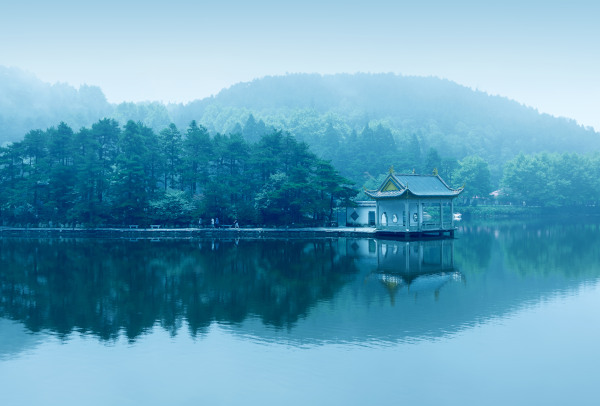
Top Locations for Winter Photography Expeditions
- Snow-Covered Landscapes in Jiuzhaigou Valley (九寨沟): The Jiuzhaigou Valley, transformed into a winter wonderland, offers a kaleidoscope of snow-covered landscapes. Crystal-clear lakes, frozen waterfalls, and ancient forests provide a captivating canvas for winter photography.
- Snow Town in the Northeast: The enchanting “Snow Town” in the northeast of China paints a picture of traditional wooden houses blanketed in snow. Against the backdrop of pristine white, the town’s charm comes alive, inviting photographers to capture the magic of winter.
- Yunnan’s Dongchuan Red Land: Renowned for its stunning red earth, the Dongguan Red Land becomes a captivating spectacle in winter. When snow dusts the vibrant fields, it creates a unique juxtaposition of colors, making it a photographer’s dream destination.
- Ice Sculptures in Harbin: The Harbin Ice Festival, with its intricate ice sculptures illuminated by colorful lights, presents a visual extravaganza. Photographers can capture the brilliance of these frozen artworks against the winter night, creating images that tell the story of craftsmanship and winter magic.
Capturing Chinese Culture in Winter
China’s winter not only covers the land in the snow, but it also turns the country’s culture into a visual symphony of traditions that are just ready to be caught by a skilled lens. Photographers have a unique chance this season to capture moments in the cold that capture the spirit of Chinese heritage.
- Temple Fairs and Festivities: Explore the vibrant temple fairs held during the winter season. These bustling events are a treasure trove of cultural performances, traditional music, and rituals, providing a rich tableau for photographers to document.
- Traditional Markets Adorned in Festivity: Chinese markets, bedecked with festive red lanterns and adorned with seasonal delicacies, become vibrant hubs of activity. Photographers can immortalize the energy of these markets, capturing the palpable joy of shoppers and the allure of winter specialties.
- Folk Performances and Storytelling: Traditional performances, such as shadow puppetry and storytelling sessions, come alive in the winter months. These artistic expressions are not only visually captivating but also offer a glimpse into the cultural narratives that have withstood the test of time.
- Street Art and Winter Displays: Cities adorned with intricate street art and winter-themed displays provide a canvas for photographers to capture urban culture. Every street corner becomes a stage for visual storytelling, with art installations and decorations narrating tales of the season.
- Ephemeral Beauty of Winter Festivals: Winter festivals, with their elaborate decorations and cultural performances, create moments of ephemeral beauty. Photographers can freeze these fleeting instances, immortalizing the craftsmanship, artistry, and cultural pride embedded in the heart of winter celebrations.
- Street Scenes in Chinese Cities: Winter street scenes in Chinese cities, adorned with festive decorations and bustling with activity, become vibrant snapshots of urban life. Photographers can freeze moments of everyday life against the backdrop of winter charm.
Photography Challenges in Cold Weather
Winter photography brings its own set of challenges that add a layer of complexity to the art.
- Battery Management: Cold weather can significantly impact camera batteries. Photographers need to manage and keep spare batteries warm to ensure they capture every moment without interruption.
- Lens Fogging: Rapid temperature changes can lead to lens fogging. Being prepared with lens cloths and keeping equipment acclimated to the cold helps mitigate this common challenge.
- Frostbite Awareness: In extreme cold, photographers must be vigilant about frostbite. Proper clothing, including gloves designed for camera operation, is essential for prolonged winter shoots.
Tips for Winter Photography Expeditions in China
- Golden Hour Magic: Leverage the soft and warm hues of the golden hour during winter. The low angle of the sun enhances the textures of snow and ice, creating captivating photographs.
- Protect Your Gear: Invest in weather-sealed camera gear and protective covers. Snow and cold can be harsh on equipment, and safeguarding it ensures longevity and optimal performance.
- Experiment with Night Photography: Winter nights offer a unique canvas for photographers. Experiment with long exposures and capture the enchanting glow of winter festivals or city lights against the snowy backdrop.
- Embrace the Silence: Winter landscapes often come with a serene quietness. Take moments to appreciate the stillness and incorporate this tranquility into your compositions.
- Tell a Story: Beyond capturing individual moments, aim to tell a story through your photographs. Highlight the cultural richness, the contrast of colors, and the resilience of life in winter.
End Words
As the snow-covered landscapes unfold, revealing a playground for skiing enthusiasts and a canvas for photographers capturing China’s winter beauty, it becomes evident that the chilly season holds an array of delights.
Whether you seek the warmth of hot springs, the tranquility of winter hiking, the vibrant traditions of Chinese festivals, or the thrill of ice fishing in frozen lakes, China offers a diverse palette for every traveler. These winter activities not only showcase the country’s natural beauty but also provide a glimpse into its rich cultural tapestry.
So, bundle up and embark on a winter journey that promises unforgettable memories, where every snowflake is a note in the melody of your travel adventure.
Related reading: Winter Vacations in China: Best Places to Visit – Things to Do – Travel Tips – Opens in new tab
Stay in Touch
 Join our newsletter by using the forms on this website or click here!
Join our newsletter by using the forms on this website or click here! Follow us on Google News
Follow us on Google News Follow us on Facebook
Follow us on Facebook
Feature Image from Depositphotos




